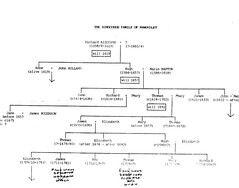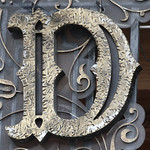Direct Line or Descendants
When you began your family history research, what did you start with? Did you begin with yourself and go back one generation at a time following your direct line only? Or did you also look at the descendants of those direct lines?
I know when I began I started just with names, dates and places and going back as far as I could – in fact I got back to 1604 with one line in Bedfordshire, England. I made connections with other researchers by using the Rootsweb emailing lists and also contacting others mentioned in the IGI (International Genealogical Index) and the IGRD (International Genealogical Research Directory). I exchanged information through RAOGK (Random Acts of Genealogical Kindness) where I would do some research in Tasmania for a person in another county of England and they would do research for me in their county.
But nowadays technology has really allowed me to do a lot more research with original records online. Less having to visit an actual archives, at least for the basics of BDM records. But it is fantastic to see so many Historical Societies having a presence online. This now allows me to connect with locals in the areas where my ancestors lived. My family history blog has also created connections with family members I knew nothing about.
By researching the descendants I have found out more about their life as a family and the community they lived in. Trove and other newspaper reports have put flesh on the bones of my family rather than just a list of names, dates and places.
Surnames in my direct line include:
- WYATT – unknown where born
- ENGLAND – Rotherham, York, ENG
- SMITH – Recherche Bay, Tasmania AUS but originally Samoan and given surname Smith
- DAVEY – Devon, ENG – free settler and down to 7 possible people
- TEDMAN – London, ENG – waterman
- CHANDLER – London, ENG – gardeners in Tasmania and at Government House in the 1860’s
- COLGRAVE – Thurleigh, Bedfordshire, ENG – back to 1604
- SOMMERS – Portland, Tasmania, AUS
- JACKSON – Donegal, Ireland
- DIXON – London, ENG
- BOYD – Maker, Cornwall, ENG
- WATKINS – Hull, Yorkshire, ENG
- HEARN – Edgeware, London, ENG
- BRYANT – Rotherhithe, London, ENG
- BULL – London, ENG
- SWAIN – Maidstone, Kent, ENG
Readers: Please leave a comment about my post or something beginning with D that relates to your family history or your research.

